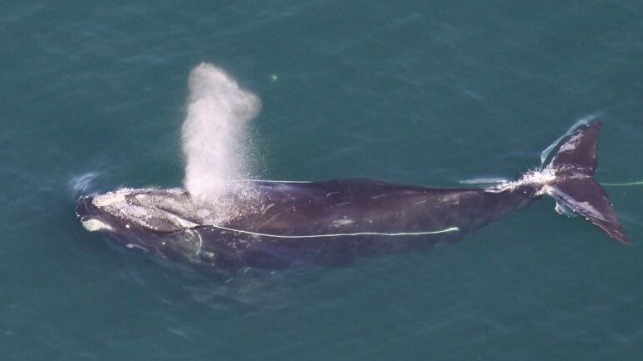Study: Most Vessels Break East Coast Whale-Protection Speed Limits

The overwhelming majority of vessels do not comply with whale-protection speed limits on the U.S. East Coast, according to environmental group Oceana.
The endangered North Atlantic right whale is edging towards extinction, its numbers likely driven down by a combination of ship strikes and lobster-pot entanglement (lobstermen dispute this claim). For the last 15 years, the National Oceanographic and Atmospheric Administration (NOAA) has imposed a 10-knot speed limit in select areas and seasons, covering all vessels over 65 feet in length.
According to Oceana, an analysis of data ending in July 2022 found that at the time, over 80 percent of boats sped through mandatory and voluntary slow-down zones. In all zones, there were examples of regulated vessels traveling in excess of 30 knots, three times the limit.
The nonprofit notes that previous studies have found that slowing below 10 knots reduces a right whale's risk of death from impact or propeller cuts by about 80-90 percent, and the population has become so small that the survival of the species hinges on the life or death of each individual whale.
The report only examined vessels over 65 feet in length, which are covered by the regulation, but Oceana noted that smaller boats cause whale fatalities and currently have no legal speed restrictions (beyond the prudence requirements of COLREGS). NOAA has proposed extending the rules down to vessels as small as 35 feet in length, but has not yet finalized the regulation.
“Boats are speeding, and whales are dying — it’s just that simple,” said Oceana Campaign Director Gib Brogan. “It’s clear that boats are still not abiding by the speed limits and are continuing to make the ocean a dangerous place for North Atlantic right whales. Time and time again we see what happens when speeding boats and right whales collide.
Oceana called on NOAA to enforce the speed regulations, update the timing and location of the speed zones to reflect current whale behavior, and issue its updated and expanded regulation on slowdown requirements.
